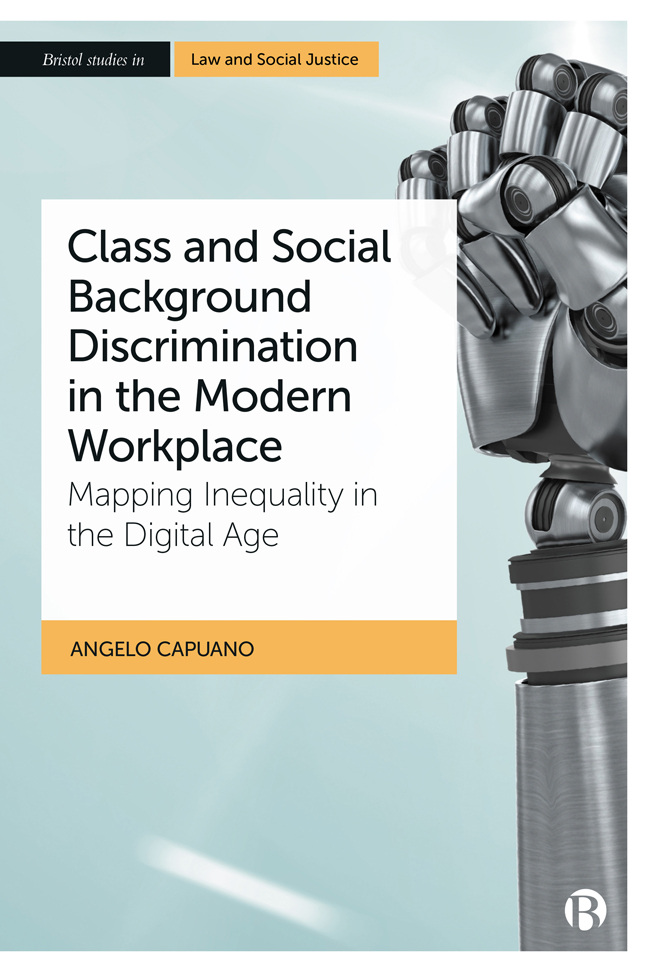 Class and Social Background Discrimination in the Modern Workplace
Class and Social Background Discrimination in the Modern Workplace Book contents
- Frontmatter
- Dedication
- Contents
- Detailed Contents
- Series Editor Preface
- About the Author
- Acknowledgements
- 1 Class and Social Background Discrimination: An Introduction
- 2 Unravelling the Meaning of ‘Social Origin’ Discrimination in Conventions of the International Labour Organization (ILO) and its Applications in the Digital Age
- 3 Mapping the Legal Landscape in Australia, South Africa, Canada and New Zealand and its Applications in the Digital Age
- 4 Social Media in Recruitment, Hiring and Firing Decisions
- 5 Automated Candidate Screening, Algorithms and Artificial Intelligence in Recruitment
- 6 Platform Work and the Post-Pandemic Shift to Remote Work
- 7 Making Future Workplaces Fairer and More Equitable
- References
- Index
7 - Making Future Workplaces Fairer and More Equitable
Published online by Cambridge University Press: 23 January 2024
- Frontmatter
- Dedication
- Contents
- Detailed Contents
- Series Editor Preface
- About the Author
- Acknowledgements
- 1 Class and Social Background Discrimination: An Introduction
- 2 Unravelling the Meaning of ‘Social Origin’ Discrimination in Conventions of the International Labour Organization (ILO) and its Applications in the Digital Age
- 3 Mapping the Legal Landscape in Australia, South Africa, Canada and New Zealand and its Applications in the Digital Age
- 4 Social Media in Recruitment, Hiring and Firing Decisions
- 5 Automated Candidate Screening, Algorithms and Artificial Intelligence in Recruitment
- 6 Platform Work and the Post-Pandemic Shift to Remote Work
- 7 Making Future Workplaces Fairer and More Equitable
- References
- Index
Summary
Introduction
Chapters 4, 5 and 6 exposed the inequalities and varying risks of discrimination based on class and social background which result from an employer's use of technology and new practices. Chapter 4 examined an employer's use of social media for cybervetting, job advertising and terminating an employee's employment. Chapter 5 examined an employer's use of algorithms and AI as recruitment tools, focusing on the use of CRS, AVI and gamification. Chapter 6 examined platform work and the postpandemic shift to remote and hybrid work. Whilst these practices may result with or worsen classism and related problems in modern workplaces, this chapter is solutions focused and it proposes a way forward for employers who may wish to address or prevent these problems to make their workplaces fairer and more equitable.
This chapter therefore proposes a suite of cascading practices which could be utilized by employers to help prevent some of these problems from arising in recruitment and employment. There may be ways to minimize, or eliminate entirely, these problems and yet still achieve the aims or goals of some of the practices.
I. Re-imagining the use and role of algorithms, AI and social media in recruitment
Whilst certain practices, such as the use of cybervetting, CRS and AI ‘hiretech’, create inequalities and risks of class and social background discrimination, there are important reasons for their use.
In relation to cybervetting, the practice may be used to help identify a ‘bad hire’ based on social media data. Employers should, however, reconsider whether cybervetting actually achieves these goals. Zhang et al write:
The present research suggests that job seekers’ SM sites contain a large amount of equal employment law and other personal information organizations typically cannot access from more traditional selection procedures. Moreover, some of this information relates to recruiter initial evaluations of job seekers, yet appears to be unrelated to future job performance or withdrawal intentions. Further, structuring the assessment of this information does not appear to improve the validity of inferences. As such, organizations should not use SM information during the staffing process, or at minimum, exercise extreme caution in how they use such information.
- Type
- Chapter
- Information
- Class and Social Background Discrimination in the Modern WorkplaceMapping Inequality in the Digital Age, pp. 192 - 202Publisher: Bristol University PressPrint publication year: 2023
